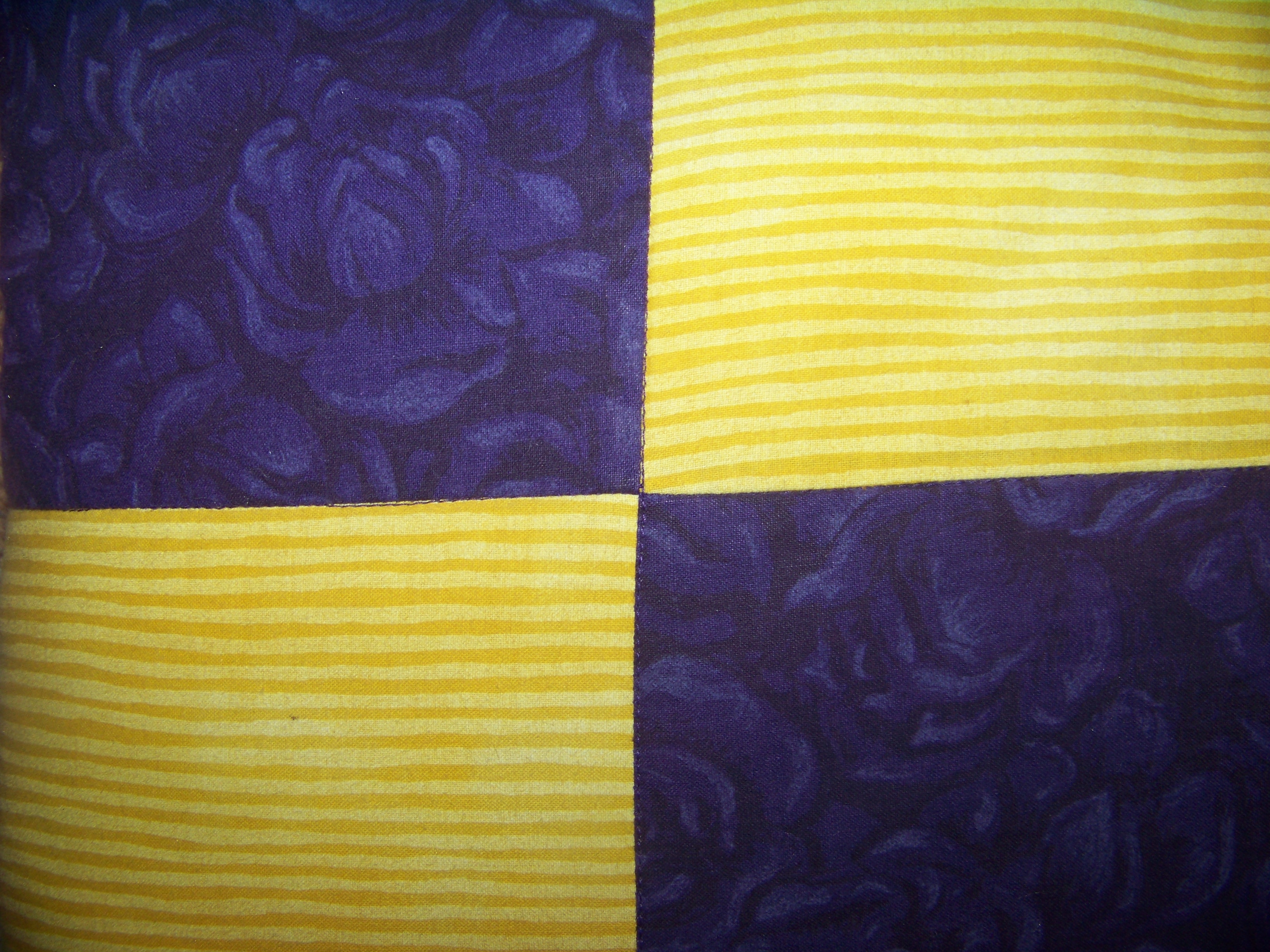About a year ago I began to really get interested in quilting. I got a quilting book for Christmas and subscribed to a quilting magazine. I tackled my first project early this year, a quilted throw pillow. To be honest, it didn’t take much to quilt it and I was left wanting more.
A few months ago I decided to try out making an actual quilt; a small one at first. I found an easy pattern to start with and picked out some fabric I liked to go with it. I’ve started on that blanket and I’ll detail my progress in another post. What I’d like to focus on in this post was a decision I found myself making about how to make the blanket.
My choice to make was whether I was going to piece and quilt the blanket by hand or machine. I found it hard to make a decision, so I mulled over it for a few days. The factors I ended up considering were accuracy, speed, location/setup, and necessary equipment.
Accuracy
One thing I’ve learned is that accuracy is very important in cutting & piecing for quilts. At first I thought hand piecing wouldn’t be as accurate as machine piecing. I quickly got more accurate as I practiced my hand piecing and as I sewed I remembered that I’m not always perfectly accurate with my machine either. This meant both methods would probably work just as well as far as accuracy was concerned.
Speed
Sewing machines can sew much faster than a person can by hand. That being said, after some practice I found that my hand piecing speed was improving so the difference between the two speeds was growing smaller.
Location/setup
This was one of the bigger factors in my decision about which kind of piecing/quilting to do. When I machine sew, I have to be at my machine which is in another room than the one in which my family spends most of their time. Granted, I could move the machine into that room and set it up temporarily on the dining room table, but that would open up another can of worms since the kids really like playing with my machine. This would mean I couldn’t even leave it for a minute to go to the bathroom without closing up the machine again.
Hand sewing, on the other hand, can be done much like my primary craft (crochet). It can be done sitting in a comfy chair in the living room, at a get-together, or sitting outside enjoying the weather. I did find it’s hard to hand-sew in the truck, however.
Necessary equipment
Last but definitely not least, I considered what machines, tools, etc. I might need for each type of piecing and quilting. For piecing both by hand and by machine I would be able to use the tools I already have (needles and a machine, respectively). For quilting, however, I only have a standard home sewing machine and a hand-quilting hoop. Both are likely too small for larger projects, which is important because I have a queen size quilt or two and several twin size quilts to make for the family alone.
That leaves me with needing to buy quilting tools for both kinds of quilting. A hand quilting frame will cost me around $700 for what I’m perceiving is a really good frame, plus some accessories. There is also a smaller one that is $400 or so plus some accessories. A quilting machine, as far as I can tell, will cost me $1000 to $2000 dollars minimum and the bigger ones cost the same as a small car, with a footprint bigger than my current crafting room/family library.

My choice
In the end, I’ve decided to hand-piece and hand-quilt my projects. Speed and potentially greater accuracy aren’t enough to outweigh the convenience, casual nature, and lower cost of hand work. As an added bonus, doing hand work makes me feel closer to the people of the past, which the history buff in me adores.
FREE Temperature Tracker!!!!
Enter your email address and you'll get a completely free, ready to print temperature tracker to use for your project.





